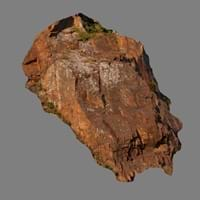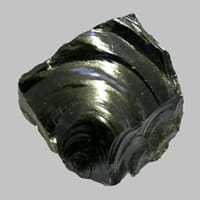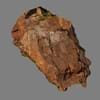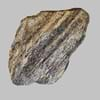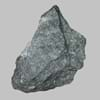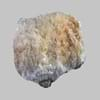Definition
Granulite is fine to medium grained metamorphic rock with a granular of polygonal crystals.
Obsidian is a naturally occurring volcanic glass formed as an extrusive igneous rock. It is produced when felsic lava extruded from a volcano cools rapidly with minimum crystal growth
Origin
Central Europe
Ethiopia
Discoverer
Unknown
Obsius
Etymology
From Latin granulum, a little grain or fine grained
From Latin obsidianus, misprint of Obsianus (lapis) (stone) of Obsius
Class
Metamorphic Rocks
Igneous Rocks
Sub-Class
Durable Rock, Hard Rock
Durable Rock, Medium Hardness Rock
Group
Not Applicable
Volcanic
Other Categories
Coarse Grained Rock, Medium Grained Rock, Opaque Rock
Opaque Rock
Texture
Granoblastic
Glassy
Color
Black, Brown
Black, Blue, Brown, Green, Orange, Red, Tan, Yellow
Durability
Durable
Durable
Scratch Resistant
Yes
Yes
Appearance
Veined or Pebbled
Shiny
Interior Uses
Bathrooms, Countertops, Decorative Aggregates, Entryways, Flooring, Homes, Hotels, Interior Decoration, Kitchens, Stair Treads
Decorative Aggregates, Interior Decoration
Exterior Uses
As Building Stone, As Facing Stone, Garden Decoration, Office Buildings, Paving Stone
Garden Decoration
Other Architectural Uses
Curbing
Not Yet Used
Construction Industry
As Dimension Stone, Building houses or walls
Arrowheads, Cutting Tool, Knives, Scrapers, Spear Points
Medical Industry
Not Yet Used
Surgery
Antiquity Uses
Artifacts, Monuments, Sculpture
Artifacts, Jewellery
Commercial Uses
Curling, Gemstone, Laboratory bench tops, Soil Conditioner, Tombstones
Creating Artwork, Mirror, Used in aquariums
Types
Not Available
Fireworks Obsidian, Mahogany, Sheen Obsidian, Snowflake obsidian and Velvet Peacock Obsidian
Features
Clasts are smooth to touch
Blocks negativity, Helps to protect against depression
Archaeological Significance
Monuments
Used
Not Yet Used
Famous Monuments
Data Not Available
Not Applicable
Sculpture
Used
Not Yet Used
Famous Sculptures
Data Not Available
Not Applicable
Pictographs
Not Used
Used
Petroglyphs
Not Used
Used
Figurines
Used
Not Yet Used
Formation
Granulite is a fine-grained granular metamorphic rock in which the main component minerals are feldspars and quartz and forms at high temperature and pressure conditions.
When the lava is released from volcano, it undergoes a very rapid cooling which freezes the mechanisms of crystallization. The result is a volcanic glass with a uniform smooth texture.
Mineral Content
Amphibole, Biotite, Feldspar, Hornblade, Micas, Muscovite or Illite, Plagioclase, Quartz
Not Available
Compound Content
Aluminium Oxide, CaO, Carbon Dioxide, Iron(III) Oxide, FeO, Potassium Oxide, MgO, MnO, Sodium Oxide, Phosphorus Pentoxide, Sulfur Dioxide, Titanium Dioxide
Aluminium Oxide, CaO, Iron(III) Oxide, FeO, Potassium Oxide, MgO, MnO, Sodium Oxide, Phosphorus Pentoxide, Silicon Dioxide, Titanium Dioxide
Types of Metamorphism
Not Applicable
Burial Metamorphism, Cataclastic Metamorphism, Contact Metamorphism
Types of Weathering
Biological Weathering, Chemical Weathering
Biological Weathering, Chemical Weathering, Mechanical Weathering
Types of Erosion
Chemical Erosion, Water Erosion, Wind Erosion
Chemical Erosion, Coastal Erosion, Glacier Erosion
Grain Size
Medium to Coarse Grained
Not Applicable
Fracture
Not Available
Conchoidal
Porosity
Very Less Porous
Very Less Porous
Cleavage
Imperfect
Non-Existent
Toughness
Not Available
Not Available
Specific Gravity
2.8-3.0
2.6-2.7
Transparency
Opaque
Translucent
Density
3.06-3.33 g/cm3
2.6 g/cm3
Resistance
Heat Resistant, Wear Resistant
Heat Resistant, Impact Resistant
Deposits in Eastern Continents
Asia
China, India, Iran, Saudi Arabia, Sri Lanka, Taiwan, Thailand, Turkey, Vietnam
Afghanistan, Indonesia, Japan, Russia
Africa
Angola, Egypt, Madagascar, Nigeria, South Africa
Kenya
Europe
Austria, Belgium, Finland, France, Germany, Italy, Norway, Sardinia, Spain, Switzerland, The Czech Republic, Venezuela
Greece, Hungary, Iceland, Italy, Turkey
Others
Not Yet Found
Not Yet Found
Deposits in Western Continents
North America
Canada, USA
Canada, Mexico, USA
South America
Not Yet Found
Argentina, Chile, Ecuador, Peru
Deposits in Oceania Continent
Australia
Not Yet Found
New Zealand
Granulite vs Obsidian Characteristics
Though some rocks look identical, they have certain characteristics which distinguish them from others. Characteristics of rocks include texture, appearance, color, fracture, streak, hardness etc. Granulite vs Obsidian characteristics assist us to distinguish and recognize rocks. Also you can check about Properties of Granulite and Properties of Obsidian. Learn more about Granulite vs Obsidian in the next section. The interior uses of Granulite include Bathrooms, Countertops, Decorative aggregates, Entryways, Flooring, Homes, Hotels, Interior decoration, Kitchens and Stair treads whereas the interior uses of Obsidian include Decorative aggregates and Interior decoration. Due to some exceptional properties of Granulite and Obsidian, they have various applications in construction industry. The uses of Granulite in construction industry include As dimension stone, Building houses or walls and that of Obsidian include Arrowheads, Cutting tool, Knives, Scrapers, Spear points.
More about Granulite and Obsidian
Here you can know more about Granulite and Obsidian. The life cycle of a rock consists of formation of rock, composition of rock and transformation of rock. The composition of Granulite and Obsidian consists of mineral content and compound content. The mineral content of Granulite includes Amphibole, Biotite, Feldspar, Hornblade, Micas, Muscovite or Illite, Plagioclase, Quartz and mineral content of Obsidian is not available. You can also check out the list of all Metamorphic Rocks. When we have to compare Granulite vs Obsidian, the texture, color and appearance plays an important role in determining the type of rock. Granulite is available in black, brown colors whereas, Obsidian is available in black, blue, brown, green, orange, red, tan, yellow colors. Appearance of Granulite is Veined or Pebbled and that of Obsidian is Shiny. Properties of rock is another aspect for Granulite vs Obsidian. The hardness of Granulite is 6-7 and that of Obsidian is 5-5.5. The types of Granulite are Not Available whereas types of Obsidian are Fireworks Obsidian, Mahogany, Sheen Obsidian, Snowflake obsidian and Velvet Peacock Obsidian. Streak of rock is the color of powder produced when it is dragged across an unweathered surface. The streak of Granulite and Obsidian is white. The specific heat capacity of Granulite is 0.14 kJ/Kg K and that of Obsidian is 0.92 kJ/Kg K. Depending on the properties like hardness, toughness, specific heat capacity, porosity etc., rocks are resistant to heat, wear, impact, etc.Granulite is heat resistant, wear resistant whereas Obsidian is heat resistant, impact resistant.
